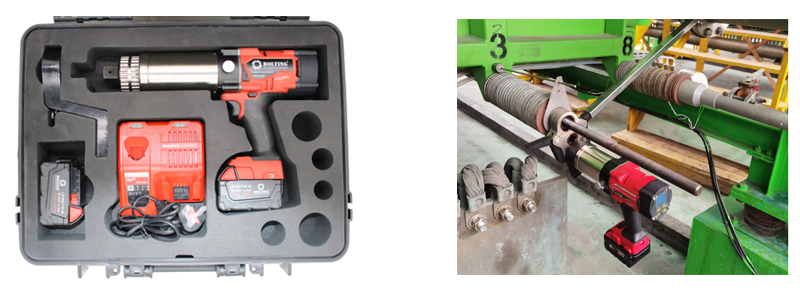Low speed of lithium battery torque wrench?
News 2025-04-23
A customer inquired about a lithium torque wrench and was very puzzled when they saw the speed parameters of the lithium torque wrench: why is the speed of the lithium torque wrench designed to be low, not higher and faster? Yes, what is the reason for the speed design of lithium-ion torque wrenches?

According to the principle, the speed design of lithium-ion torque wrenches can be higher, but this will bring a series of challenges and adverse effects. And the results caused by these impacts are contrary to the original design intention and cannot serve and meet the working conditions well.
High rotational speed may cause the torque output of the lithium-ion torque wrench to be not precise enough. Because the torque applied during the tightening process is influenced by greater inertia and power, making torque control less accurate.
High rotational speed will increase the wear rate of internal mechanical parts in lithium torque wrench tools, which may lead to an increase in tool maintenance frequency, high frequency of usage failures, and shortened lifespan.
A higher rotational speed means greater energy consumption, which will deplete the lithium torque wrench battery more quickly, reduce the available working time after each charge, and cause inconvenience to work.
High speed lithium torque wrenches may generate greater vibration and recoil during operation, which may make the tool more difficult to control and increase the risk of operator injury.
High speed electric tools typically generate more noise and heat, which may affect the operator’s comfort.
Therefore, although the theoretical speed of lithium-ion torque wrenches can be designed to be relatively high, in practical applications, lower speeds are usually preferred to ensure torque accuracy, improve tool durability, maintain battery efficiency, ensure operational safety, and reduce overall costs. For applications that require high speeds, other types of electric tools may be chosen, such as impact wrenches, whose design focuses more on high torque and efficiency rather than precise torque control.

